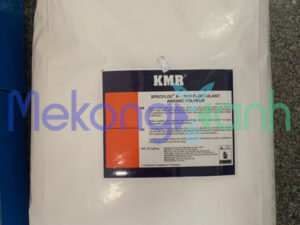PRODUCT
Cationic Polymer sedimentation auxiliaries
In the environmental technology industry, the treatment of wastewater or waste before being released into the natural environment is always a top issue. Polymer deposition aids It is one of the effective solutions to the problem of wastewater and supply water treatment. Let's take a look at how effective this chemical is.
In the environmental technology industry, the treatment of wastewater or waste before being released into the natural environment is always a top issue. Polymer deposition aids It is one of the effective solutions to the problem of wastewater and supply water treatment. Let's take a look at how effective this chemical is.
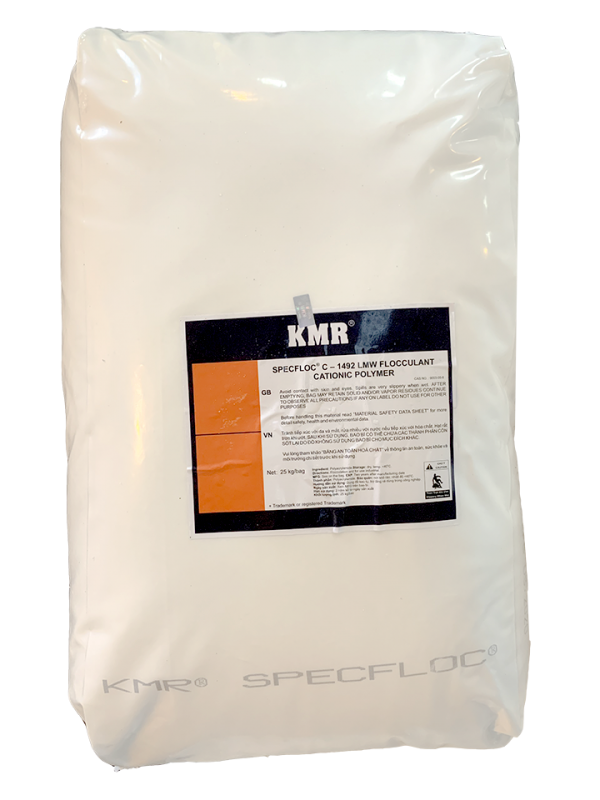
Information about product Polymer Cationic C1492
– Product name: Polymer Cationic C1492
– Other names: Cationic Polyacrylamide, PAM, sedimentation aid
- Product Type: environmental treatment chemicals
– Specification: 25kg/bag
– Origin: Great Britain
– Appearance: white powder
Characteristic properties of polymer chemicals
Polymer chemicals are in solid form, exist in the form of crystalline particles, powder or emulsion and also in solution form.
The polymer is white, odorless, non-volatile, soluble in water and some common solvents.
This chemical is also known as polymer deposition aids, flocculation. Because when using polymer in the water treatment process, it will bring high water purification efficiency, thanks to this chemical, the larger sludge flocs in the water help the sludge settling process faster.
When deciding to use polymers in your work, you can consider using between three polymers: cationic or anionic polymers, or nonionic polymers. This distinction is based on the charge the polymer has. Learning about this polymer charge will benefit you in the treatment of wastewater and sludge.
>> See more: Anionic Polymer
>> See more: Products
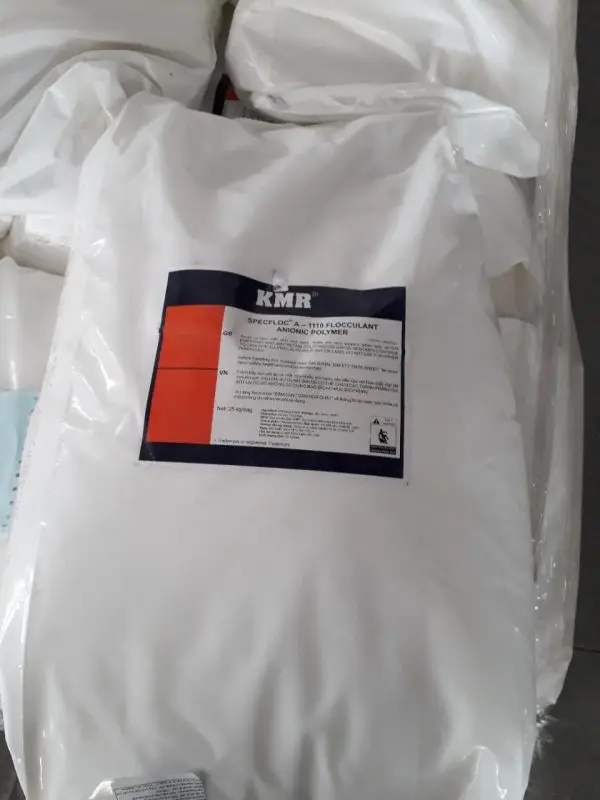
Polymer chemicals with clearly labeled packaging
Polymer Cation C1492 is a chemical used in water treatment with a white crystalline solid appearance like sugar, soluble in water, and has a high adhesive viscosity when dissolved in water. As a settling, flocculating, flocculating and liquid-solid separation aid in many industries such as wastewater treatment, sludge treatment, animal feed, textile dyeing, metallurgy...
- Ion content: 20% – 30%
- Molecular Weight: 8-10 million
- Density : 0.63 g/cm3
- Dissolution time: Minutes 60
- pH: 3 – 10
- State: Appearance small white crystals, soluble in water
- Substance insoluble in water: 0.1%
- Viscosity (0.1% solution at 20oC)
- Specification: 25kg/bag
- Place of Origin: KMR – England
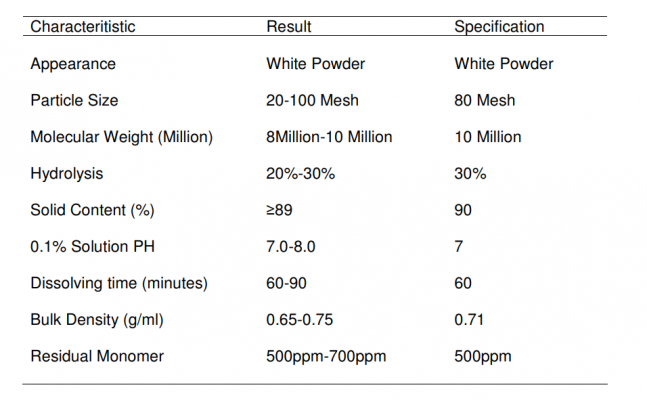
Application of Cationic Polymer C1492
Polymer Cationic C1492 is not only used in wastewater treatment, but they are also used in many different fields. So what are those apps?
- As one of the most effective water treatment chemicals on the market today, in the process of treating them encountering wastewater will help bind the colloidal particles in the water (Sediment) which inherently carry a positive charge, so they will attract negatively charged particles (charge of floc and colloidal particles). Reduce turbidity, increase the settling efficiency of the treatment process.
- This substance is also used to filter water, reduce suspended solids in water, and reduce organic and inorganic substances in water. Accelerates the dissolution of air bubbles (for better flow and efficiency).
- C1492 thickens the sludge, dries the sludge, and is convenient for the sludge pressing process.
- In addition, this is also an additive and binder in aquatic and seafood feed
In wastewater treatment processes, there is always the support of polymer chemicals
- Polymer chemicals are most commonly used in wastewater treatment because of their ability to coagulate metal crystals to make water clear and cleaner.
- Polymer chemicals treat inorganic sludge with high efficiency.
- The flocculation of the sludge to promote faster sedimentation, helping to regain the clarity of the water.
- In addition, the polymer also has the ability to assist the settling of inorganic molecules in water and coagulation of organic molecules.
- The ability to dissolve air bubbles of the polymer is also quite high, making the flow stronger.
- Polymers are enemies of wastewater because they remove harmful phosphates.
- Only a small amount of polymer can dry a large amount of sludge. And when using it, the correct ratio of polymers must be used to avoid the water being viscous due to the excessive amount of polymer.
With cationic polymer chemicals
Typically, polymers are used for wastewater from industrial plants such as beverage, beer, wine, and dairy factories.
- Centralized place for wastewater treatment.
- Factories produce spices such as sugar, monosodium glutamate.
- Animal and poultry slaughterhouses also use polymers to treat dirty water.
- Chemical-heavy places like textile factories also have to use them sedimentation aid cationic polymers to purify water before being released into natural sources.
With c1492 . anionic polymer
Most will use anionic polymer c1492 Treatment of water sources related to inorganic substances.
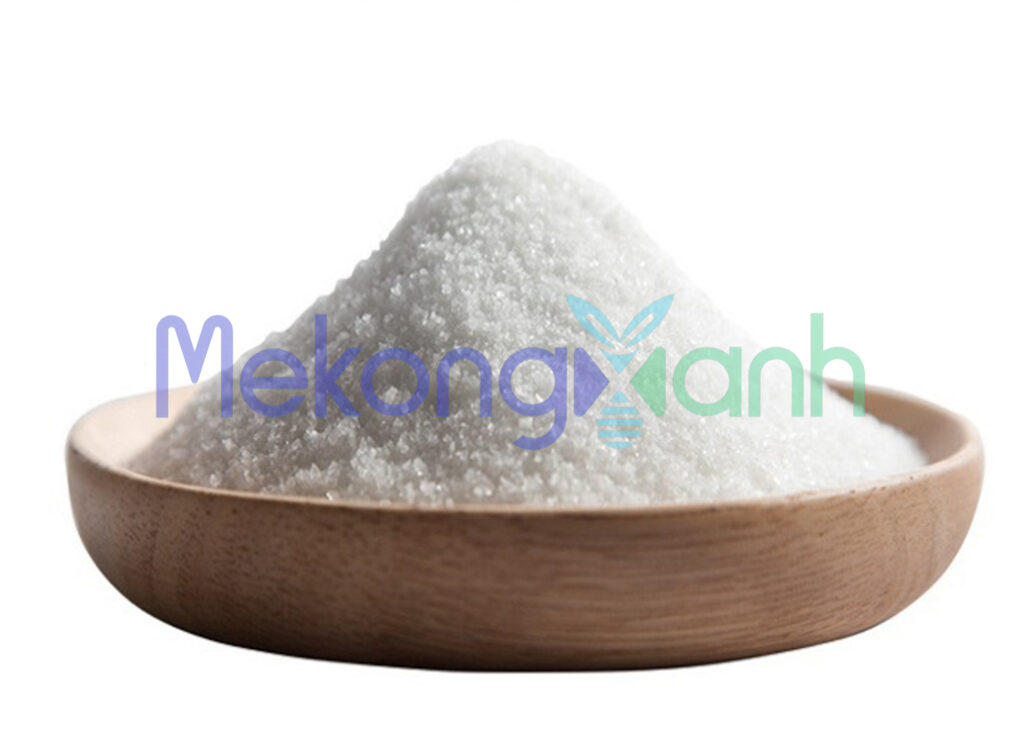
Anionic polymer chemicals are used in wastewater treatment
- Applications of anionic polymers are mostly used in wastewater from the metallurgical industry, mining and iron and steel production, and turbid wastewater.
- Anionic polymer is used to bind the waste together, along with the gas stream that will push the waste to the surface of the water, and so the treatment of this waste will be fast and save time.
- Natural water sources, such as living water, rainwater, also use anionic polymers to filter water. The water supplied for our daily life is also treated with polymers before being put into use.
- Water treatment applications in the paper industry.
With nonionic polymers
Finally, nonionic polymer chemicals. This chemical is used specifically for wastewater with high acidity.
In addition to being a water treatment chemical, the nonionic polymer will be used as an additive in the textile industry.
Advantages and disadvantages of C1492 . cationic polymer
Advantages of Cationic Polymer:
As a flocculating agent, it is widely used in the process of wastewater treatment, especially in the process of sludge pressing and final sludge treatment. So what advantages do they have that are used so much?
- Has a wide operating range, wastewater medium from pH 3-9
- After treatment does not change the pH of the water
- Removes inorganic salts present in water
- Highly effective in removing solids, inorganic residues in water
- Using only a small amount is also highly effective, easily soluble in water
- Easy to store, transport and use
Disadvantages of Cationic Polymer:
Due to the high efficiency of wastewater treatment, in the treatment process, only a small amount is needed, if too much, it will create viscous, which is difficult to coagulate.
Precautions when using Polymer Cationic C1492
Polymers are legal, widely used, common, familiar chemicals. Polymer chemicals have economic value, because when used in low doses, the efficiency is quite high. However, the problem of preservation polymer chemicals need to be careful, you should pay attention to how to preserve them to protect human health.
This is a chemical that is easy to water and is slightly corrosive, so in the process of storage and preservation must use materials such as: stainless steel, fiberglass, plastic, epoxy. When exposed to water, they will form a sticky and highly viscous mixture, especially very slippery, which will affect transportation and use. Therefore, we must pay special attention to avoid slipping and falling.
- Polymers are corrosive, so polymers should not be stored in copper, iron, or aluminum containers.
- Depending on the amount of polymer stored, you can use stainless steel containers, plastic bags, glass jars, epoxy to store polymers.
- Make sure the polymer storage temperature is below 40 degrees Celsius, dry, avoid moisture and direct sunlight.
- Polymer exists in the form of granules that can be very slippery, so when you drop the polymer, clean it up to avoid slipping. It is best to use water to clean the area where the polymer particles fall off.
- When in contact with chemicals, you should wear protective gear to avoid irritation to the skin and eyes.
Related products
-
environmental treatment chemicals
Anionic Polymer sedimentation auxiliaries – PAM
-
environmental treatment chemicals
Caustic Soda Flakes – NaOH – Caustic Soda Flakes
-
environmental treatment chemicals
Poly Aluminum Chloride 31% (PAC)
-
environmental treatment chemicals
Alum Al203 14.5%


